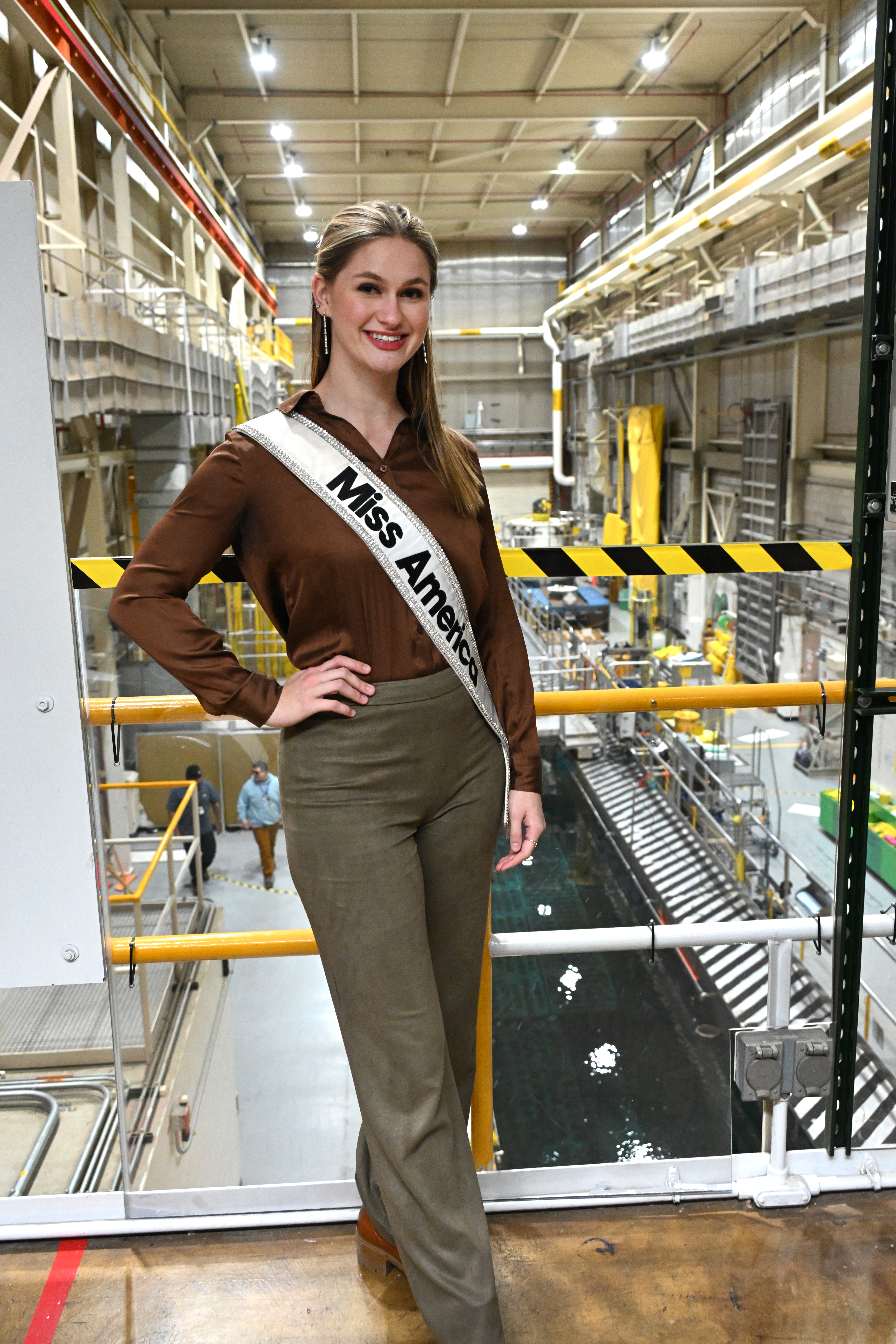When it comes to inspiring young American girls to pursue careers in science, technology, engineering and math – STEM – is anyone better suited to the task than … um … Miss America?
Oh yeah, you’d better believe it.
For her last appearance wearing the crown and sash, Miss America 2023 Grace Stanke visited Idaho Falls on Jan. 3 to give a pep talk to 105 sixth-grade girls from three local elementary schools. The visit was a collaboration between Idaho National Laboratory and Idaho Falls School District 91. She was at the end of a journey that covered 280,000 miles, from Fukushima, Japan, to COP28 in Dubai to the Macy’s Thanksgiving Day Parade in New York City.
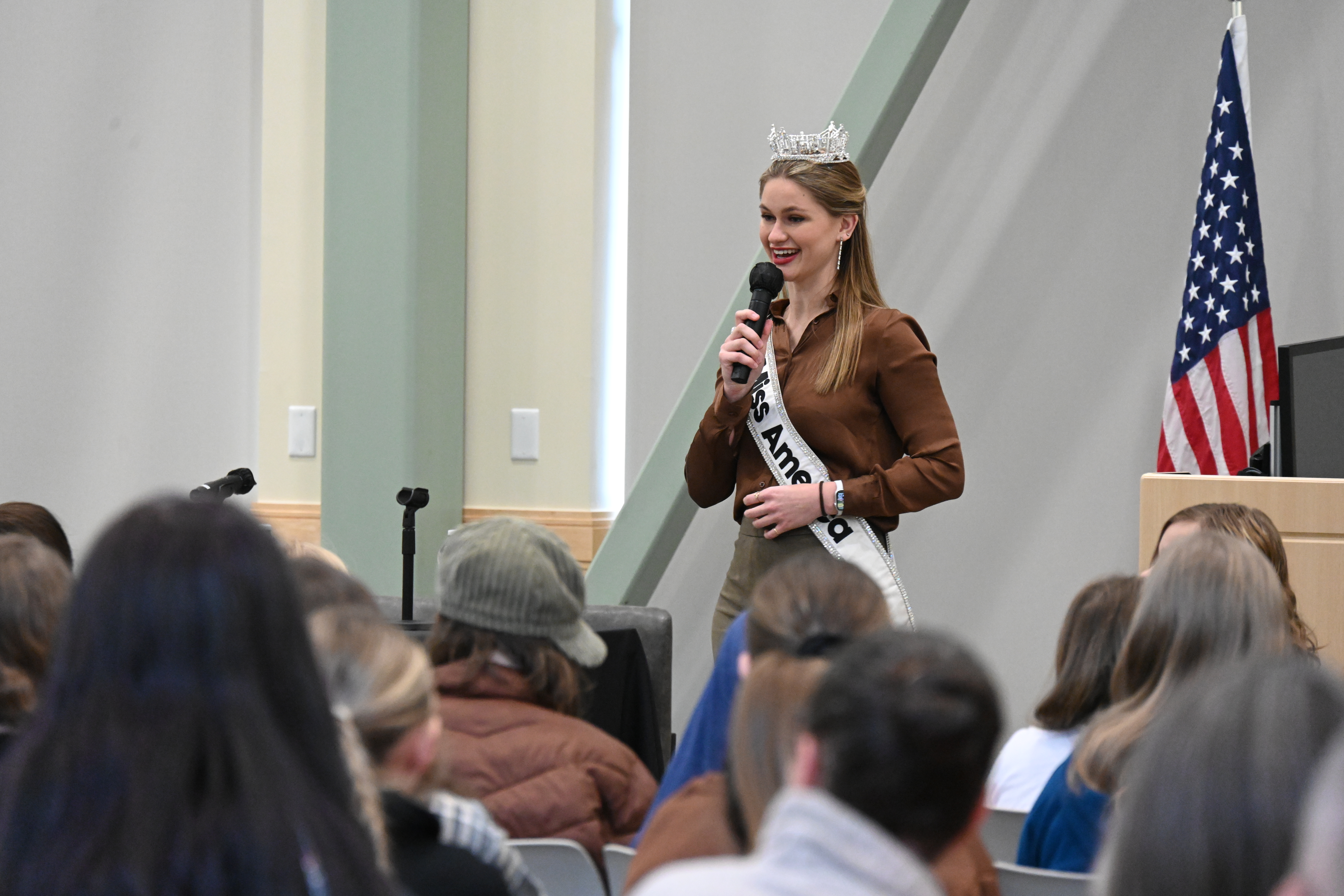
The recent nuclear engineering graduate at University of Wisconsin declared outright that she intended to use her status to raise awareness about nuclear power and zero-carbon energy. In this respect, she was an atom-smashing success. In July, the 5-foot-11 blonde gave an interview to CNN about the “Barbenheimer” phenomenon – something she could relate to. In September, the Wall Street Journal declared her “The New Face of Nuclear Energy.”
In front of a crowd of tweens, however, she was relaxed, goofy, candid and encouraging, telling girls 10 years younger than herself that it’s OK not to know what you want to be when you grow up. Never mind the adults asking you all the time, the possibilities are infinite, and not just for scientists and engineers but also good communicators.
Stanke said she’s been aware of engineering from an early age because her father was a civil engineer who built bridges. She’s as used to wearing a hard hat as a crown. But while the idea of building things to make the world a better place appealed to her, she wasn’t sure how interested she’d be in moving dirt or pouring concrete.
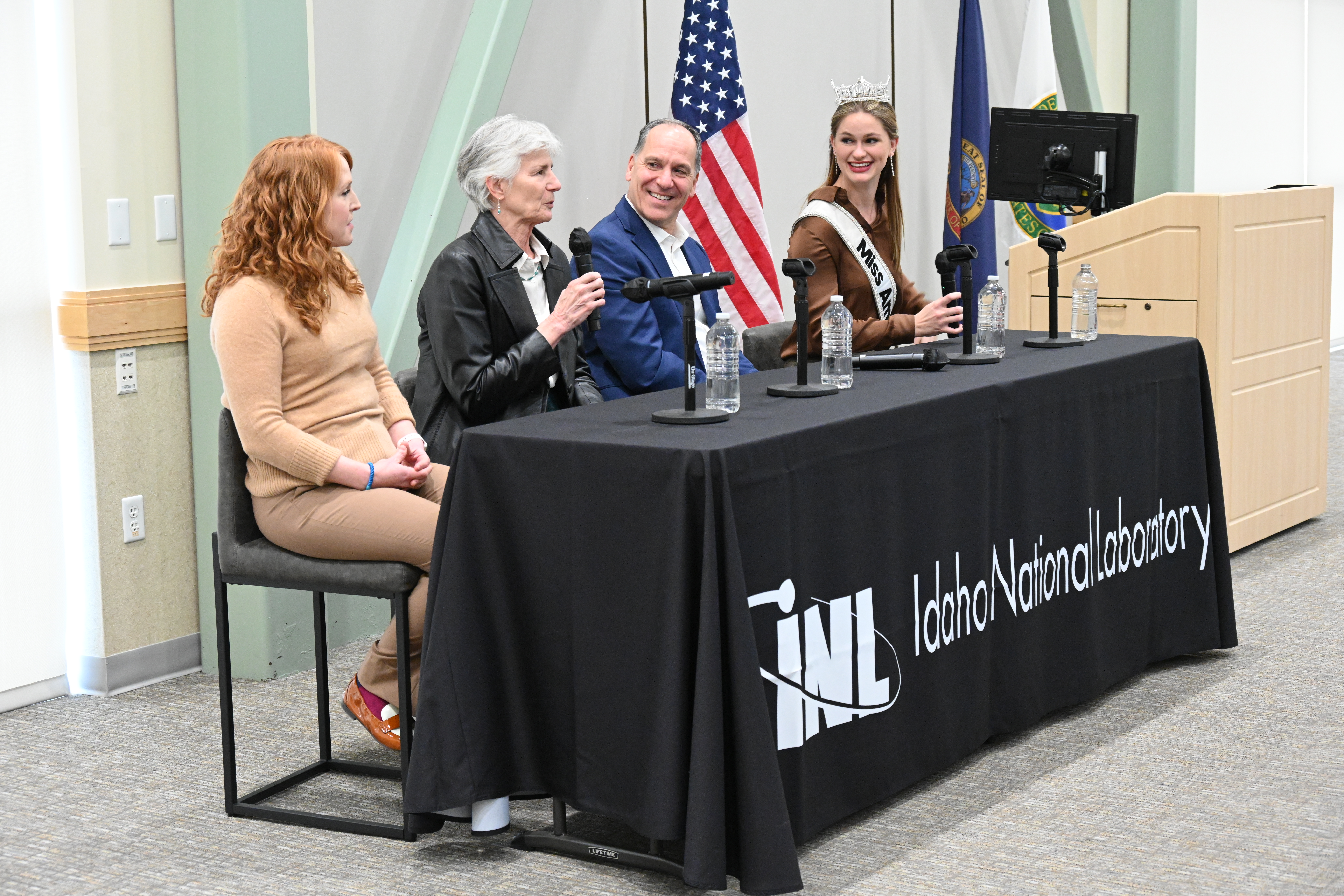
Scouting out colleges with her mother, they visited Texas A&M and saw nuclear engineering on the list of majors. “I knew nothing about it, but I thought to myself, ‘What a flex it would be to say I’m a nuclear engineer. Maybe I want to do this.’ When I told my dad he said, ‘Don’t go into nuclear. There’s no future in it.’ What do we do when dad tells us not to do something? … I said, ‘Watch me.’”
On the Miss America trail, opportunities to talk to school kids were hit and miss, but Stanke said she looks forward to more events like her Idaho visit. Once her crown is retired, she will go to work for Constellation Energy Corporation, splitting her time between fuel core design and public advocacy.
“This is the stuff that’s going to continue post-Miss America,” she said.
Lined up for photos and face time after the talk, reviews from the crowd were overwhelmingly positive.
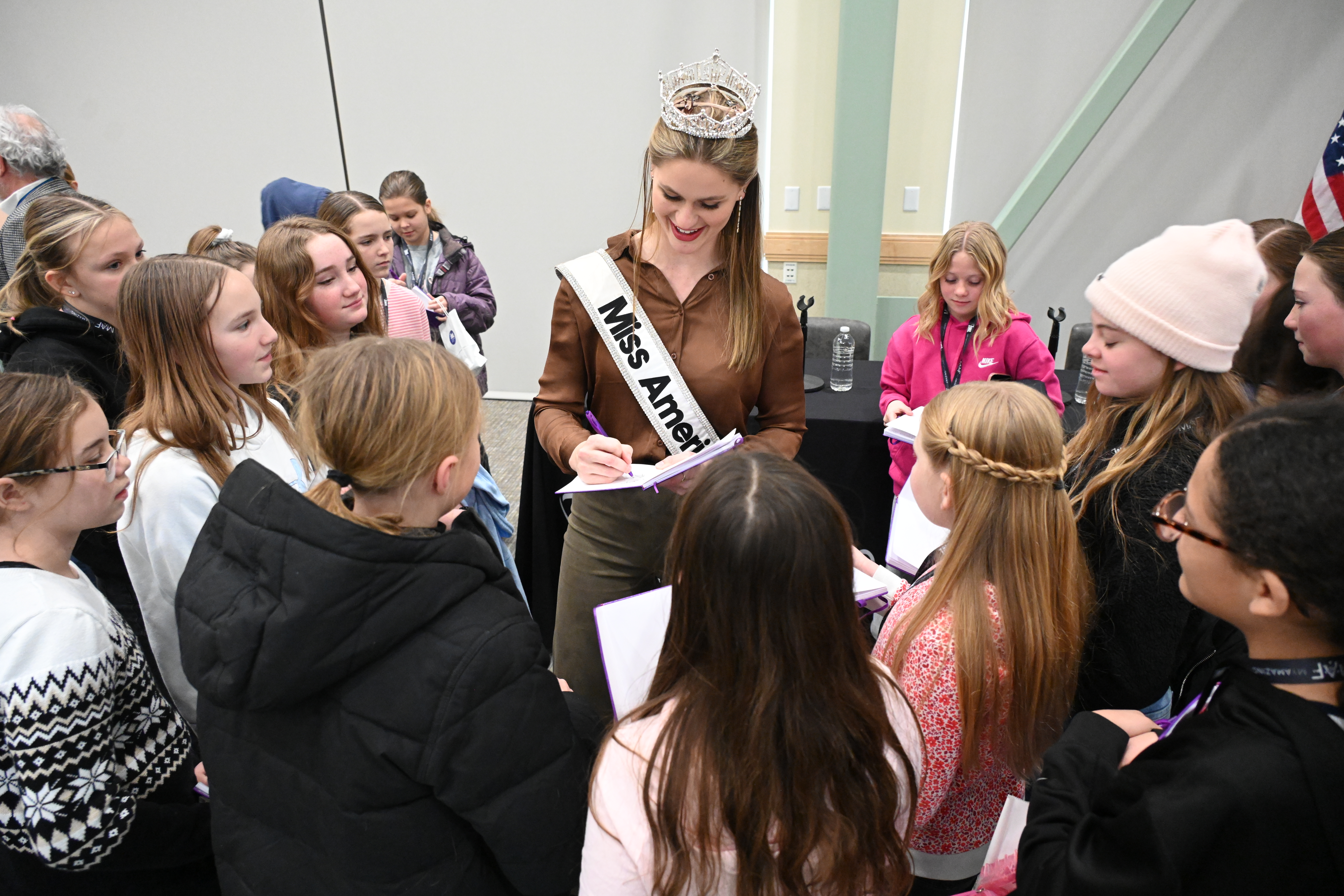
“She honestly is super cool! She made me think of things I want to do,” said Oakley Parmer, from Sunnyside Elementary in Idaho Falls. Classmate Lola Bertagnolli concurred. “She’s really cool and really funny, and she didn’t stutter,” she said. “I knew nuclear engineers existed, but not much more than that,” said Emmy Cooper, another Sunnyside student.
“She’s like an idol to women,” said Talia Russell, a sixth grader at Temple View Elementary in Idaho Falls. “She’s beautiful, but also good at setting an example.”
“This is the first time I’ve ever met someone famous,” said Lucy Hatch, from Bush Elementary in Idaho Falls. Already good at science, she said she plans to work even harder.
Adults were no less impressed. “I think it’s fantastic they targeted this age group,” said Temple View teacher Judy Bloom. “It’s important for the girls to see someone who’s passionate about what they want to do and make the world a better place. I think she spoke well to the kids. I think they can be inspired by her.”
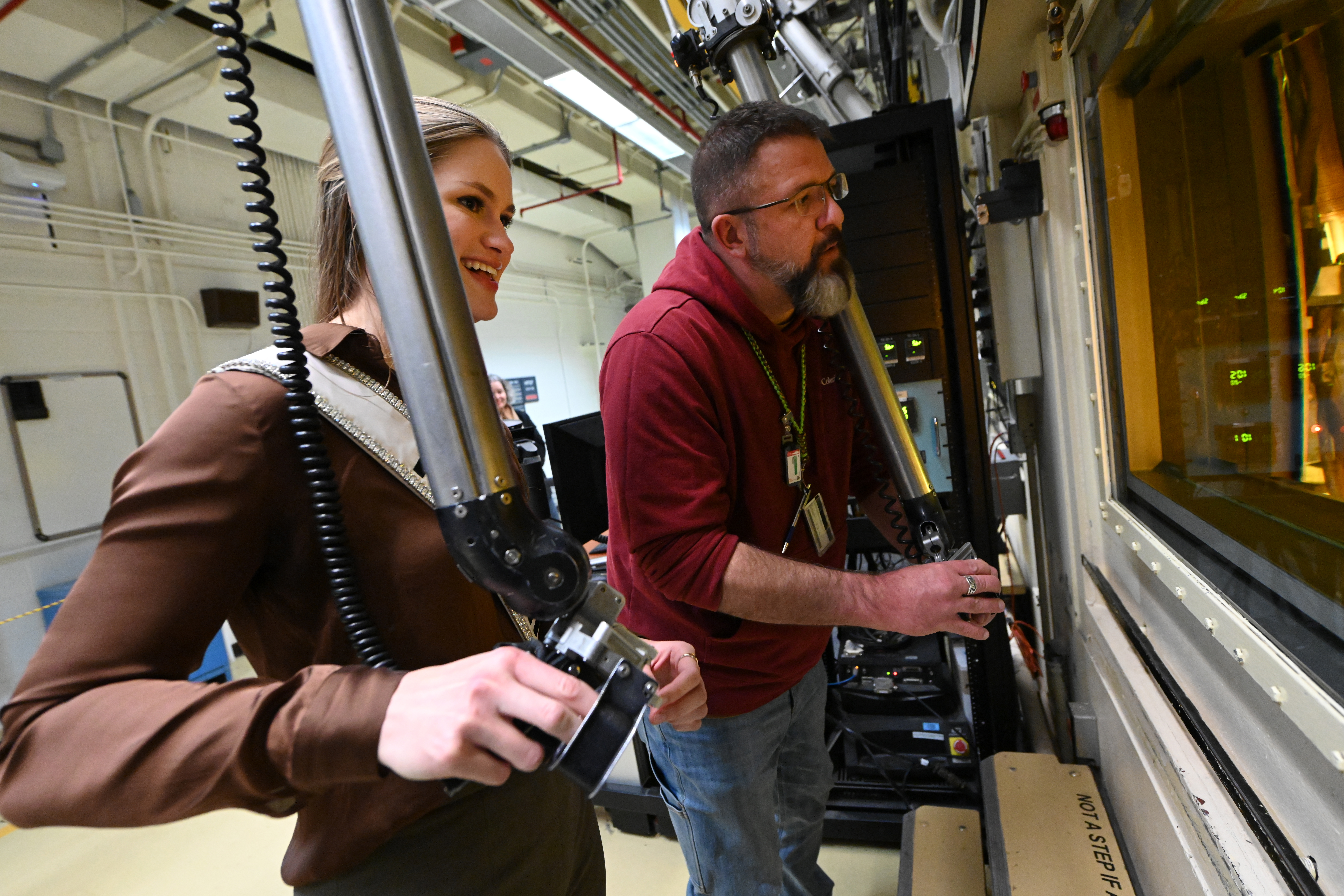
“I love the way they brought in the working side of the Miss America process,” said Bush aide Tamera Bishop. “I also love how she said, ‘Don’t take no for an answer.’”
Stanke said her first semester in college she wondered what she’d gotten herself into. But when she learned that 20 percent of America’s electricity comes from 93 reactors, she was all in. Perhaps the high point of college came when she created a program for low power physics testing, now used at 17 nuclear power plants.
On the personal side, nuclear science helped her dad beat cancer. “Nuclear science is all around us,” she said. “You’ve got it right here, and you are the ones who are going to go to work at these places. I’m wearing a crown, but I see sparkles on all of your heads, too. … I want you guys to always ask that ‘What if?’ question. Find your happiness, passion and care for the world.”
